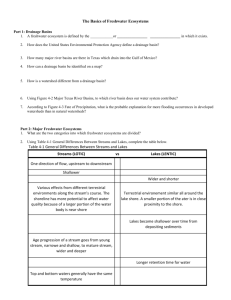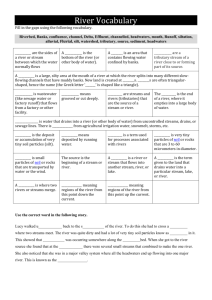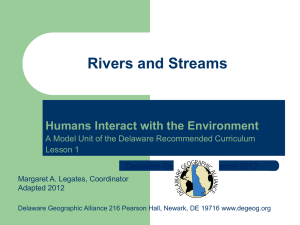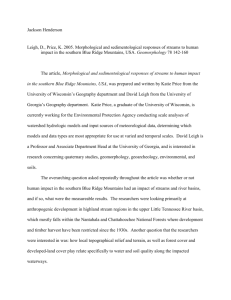STREAMS
advertisement
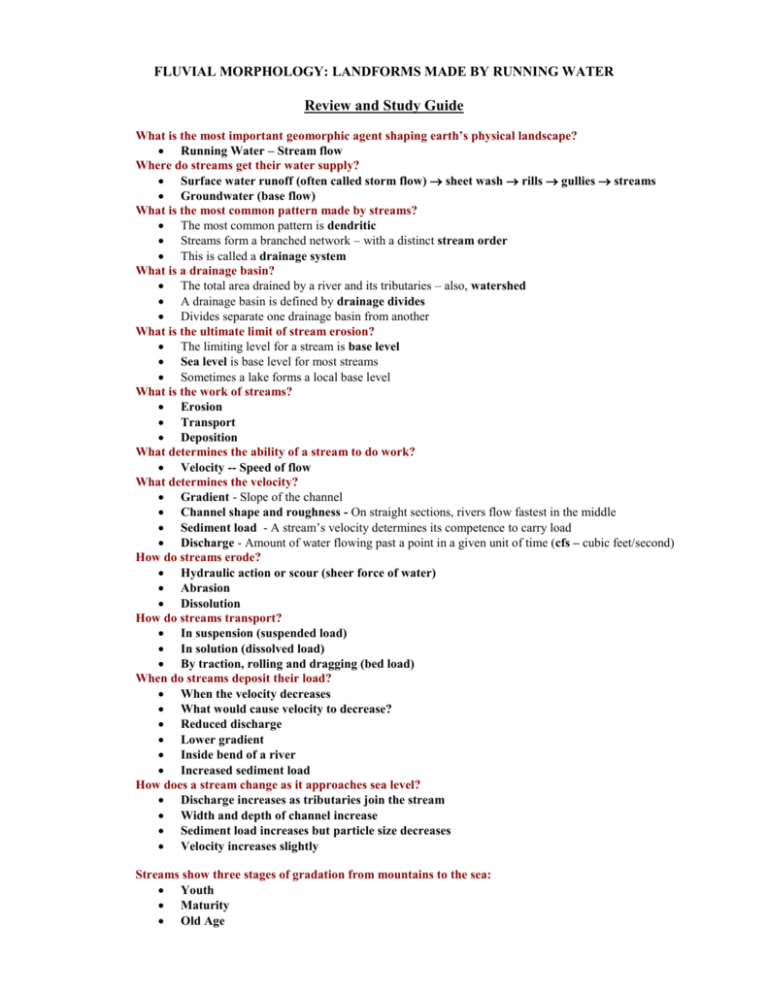
FLUVIAL MORPHOLOGY: LANDFORMS MADE BY RUNNING WATER Review and Study Guide What is the most important geomorphic agent shaping earth’s physical landscape? Running Water – Stream flow Where do streams get their water supply? Surface water runoff (often called storm flow) sheet wash rills gullies streams Groundwater (base flow) What is the most common pattern made by streams? The most common pattern is dendritic Streams form a branched network – with a distinct stream order This is called a drainage system What is a drainage basin? The total area drained by a river and its tributaries – also, watershed A drainage basin is defined by drainage divides Divides separate one drainage basin from another What is the ultimate limit of stream erosion? The limiting level for a stream is base level Sea level is base level for most streams Sometimes a lake forms a local base level What is the work of streams? Erosion Transport Deposition What determines the ability of a stream to do work? Velocity -- Speed of flow What determines the velocity? Gradient - Slope of the channel Channel shape and roughness - On straight sections, rivers flow fastest in the middle Sediment load - A stream’s velocity determines its competence to carry load Discharge - Amount of water flowing past a point in a given unit of time (cfs – cubic feet/second) How do streams erode? Hydraulic action or scour (sheer force of water) Abrasion Dissolution How do streams transport? In suspension (suspended load) In solution (dissolved load) By traction, rolling and dragging (bed load) When do streams deposit their load? When the velocity decreases What would cause velocity to decrease? Reduced discharge Lower gradient Inside bend of a river Increased sediment load How does a stream change as it approaches sea level? Discharge increases as tributaries join the stream Width and depth of channel increase Sediment load increases but particle size decreases Velocity increases slightly Streams show three stages of gradation from mountains to the sea: Youth Maturity Old Age Stream Stage 1 - Youth Characteristics of Youthful Streams Steep irregular profile Waterfalls, rapids, and plunge pools River is deepening its channel Cutting into bedrock – Vertical erosion dominant Potholes V-shaped cross-section Waterfalls Hard rock layers have not yet been smoothed away Potential Hydroelectric Power Cutting into Bedrock Large Boulders as Bed Load Stream Stage 2 - Mature Valley Characteristics of Mature Valley Streams Valley widening begins Meandering Stream Braided Streams – Sand bars and divided channels Floodplains Lateral Erosion -- Valley Widening Begins Erosion is greatest on the outside bend – Cut-banks Deposition on the inside bend – Point bars Meanders Migrate downstream Widen the valley Form cutoffs Create oxbow lakes Stream Stage 3 - Old Age Characteristics of Old Age Streams Wide Alluvial Valley Stage Natural Levees Built by floods (normal flooding is generally beneficial) Depositional feature Parallel to the stream channel on both banks Natural levees cannot contain floods Rivers drop their load when they enter the ocean or a lake and form a Delta Distributaries Typical delta – Nile Delta – Shaped like the Greek letter Birdfoot delta – Mississippi Delta Ganges-Brahmaputra Delta – the largest and most densely populated How do people change rivers? Deforestation Channelization Urbanization Construction Paving e.g., Los Angeles River Dam building How do these changes affect rivers? How does development change streams? Stream Pollution
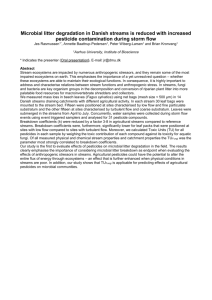

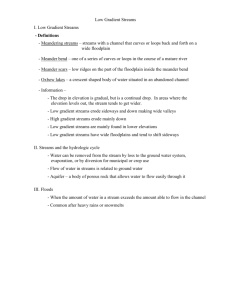


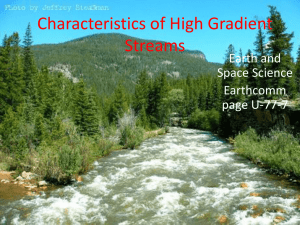

![dynamic_planet_notes[1]](http://s3.studylib.net/store/data/007076439_1-69e76760cbc32fcb4f029e41a163992e-300x300.png)
